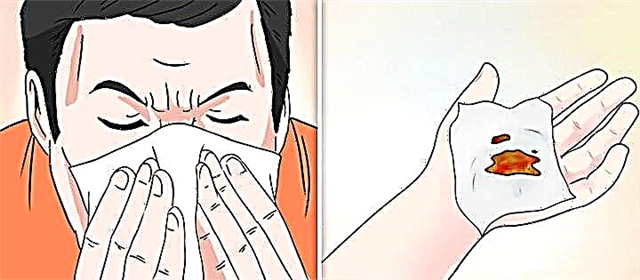A stuffy nose in a small child becomes a real problem for a mother. The baby is naughty, refuses food, does not take the breast, it is difficult for him to breathe, he sleeps with his mouth open. Many parents are intimidated by this. But if the correct treatment is started, then you should not be afraid. You need to calm down, learn how to clear the nose of an infant and approach this problem with all seriousness. After all, improper cleansing of the nasal passages can easily injure the mucous membrane.
Causes of rhinitis in infants
 If we talk about the causes of acute rhinitis, then these are mainly infectious processes occurring in the nasopharynx: ARVI, adenovirus, influenza, parainfluenza, allergies. Inflammation of the sinuses accounts for about a quarter of all colds. The disease develops under the influence of viruses or bacteria. Therefore, a different therapy will be prescribed depending on the pathogenic agent that is detected during inoculation.
If we talk about the causes of acute rhinitis, then these are mainly infectious processes occurring in the nasopharynx: ARVI, adenovirus, influenza, parainfluenza, allergies. Inflammation of the sinuses accounts for about a quarter of all colds. The disease develops under the influence of viruses or bacteria. Therefore, a different therapy will be prescribed depending on the pathogenic agent that is detected during inoculation.
It is impossible to distinguish viral rhinitis from bacterial without medical education. Therefore, when the first signs of pathology appear, an appeal to an otolaryngologist or pediatrician is mandatory.
Even newborns have a physiological rhinitis that does not require treatment. It is characterized by high humidity in the nasal passages, due to the adaptation of the body to the external environment.
Features of the course of the common cold in newborns
Babies get colds more often and much more severely than adults. This is due to the physiological characteristics of a small organism. In children under one year old, the nasal passages are too narrow. The snot does not have time to evacuate and clogs up the nose. The child begins to suffocate, but he still does not know how to switch to mouth breathing. Some of the secretions may come out on their own when sneezing, if the nose is not too clogged.
It is better for mothers to find out in advance how to remove snot from a baby, because this cannot be avoided anyway. It is very important to cleanse the nose in a timely manner so that there is no blockage of the passages. There are known cases of the tragic death of young children, who suffered from suffocation due to the fact that the nasal passages were clogged with thick mucus.
Symptoms
Everybody gets a cold almost the same way. Children rub their noses with their hands, often begin to sniff, squelch, spit out a pacifier, refuse to eat, and stop sucking normally. Against the background of intoxication, body temperature may rise, sweating, chills, hyperemia, and rashes may appear.  Difficulty wheezing appears, indicating that urgent measures need to be taken.
Difficulty wheezing appears, indicating that urgent measures need to be taken.
All stages of a cold are accompanied by snot of different colors. Transparent liquid mucus is formed at the very beginning of the disease. Further, the discharge thickens, acquiring a green tint.
It is under the influence of drugs that pathogens die off. At the final stage of the disease, the snot turns yellow: along with dying microbes, waste products are formed in the mucus.
Stages of cleansing the nasal passages
Before clearing a baby's nose, you need to prepare thoroughly. First of all, you need to create a comfortable environment for recovery. The room where the baby is located must always be clean and moist. Do a damp mop and ventilate as often as possible. Remove any annoying odors. Many parents believe that it is necessary to properly wrap the child and heat the room.
The room should not be hot. The optimum air temperature is 20 degrees, humidity is 60%. Remember, pathogenic microbes actively multiply in dry, heated rooms and are afraid of low temperatures.
Prepare cotton wool, saline or salted water (a teaspoon of salt per liter of warm boiled water), vaseline pharmacy oil, nasal aspirator or soft syringe with the tip of the smallest diameter, warm soapy water for washing instruments.
How to clean your baby's nose:
- You need to approach the process calmly, this is extremely important, otherwise both mother and child will suffer. It is advisable for the newborn to calm down. Begin the procedure by thoroughly washing your hands with a fragrance-free product so that the smell does not irritate the mucous membranes. It is best to carry out the procedure on a changing table or any hard surface.
- Place one or two drops of lukewarm saline in each nostril. Wait 5 minutes for the crusts to soften.
- In advance, make blanks of cotton wool in the form of thin flagella no more than seven centimeters long. Dip the tip of the flagellum in petroleum jelly, remove the rest.
With gentle rotating movements, insert the tourniquet into the nostril 1-2 centimeters deep, no more. Then slowly pull out the flagellum along with the secretions. Do the same with the other nostril.
- Finally, wipe the baby's nose with clean cotton wool. Do this without pressing hard.
- Repeat the procedure each time with a clean tourniquet until the nasal passages are completely clear.
Tip: Clean at the same time, such as morning and evening, if twice a day is sufficient. So children get used to the procedure faster and tolerate it much more calmly.
If there is too much nasal discharge, you can use a nasal aspirator or a regular small pear. It is easy to use them: rinse the soft tip of the enema, squeeze all the air out of it, insert it into one nostril, while closing the other. Unclench the pear, the discharge will be drawn into its body. Remove the contents from the pear and wash with warm water and soap. Repeat the same steps with the second nostril.
The nasal aspirator works in almost the same way. With the difference that it is a construction of replaceable filters and flexible tubes, one of which has a soft disposable nozzle. The tube with a soft nozzle should be inserted shallowly into the nasal passage, the end of the second tube should be taken into the mouth and suction movements made. All mucus will go into a special container.
If you are using a nasal aspirator or syringe, then you need to prepare in the same way as when cleaning a baby's nose with cotton swabs.
If you value safety, then use the electronic suction, which is a small device with AA batteries. One nozzle is inserted into the body of the device, the other into the nasal passage. On the device, the power button is pressed, which starts the automatic suction. Electronic and mechanical nasal aspirators make the procedure hygienic and efficient.
How not to clean a baby's nose
- do not cleanse immediately after feeding, this may cause regurgitation;
- do not use cotton swabs, they are hard and can harm the mucous membrane and even provoke nosebleeds due to the increased sensitivity of the membrane and blood vessels;
- do not use adult nasal sprays for children. It's not even about the different composition of the preparations, but about the design of the bottle. Children's nasal sprays come with a miniature tip. Using an adult spray for children significantly increases the risk of fluid from the nasopharynx entering the ear. This can cause the development of otitis media.
In addition to properly cleansing the nasal passages, the newborn should receive adequate treatment. As soon as the child has the first symptoms of the disease, do not delay visiting a specialist.



